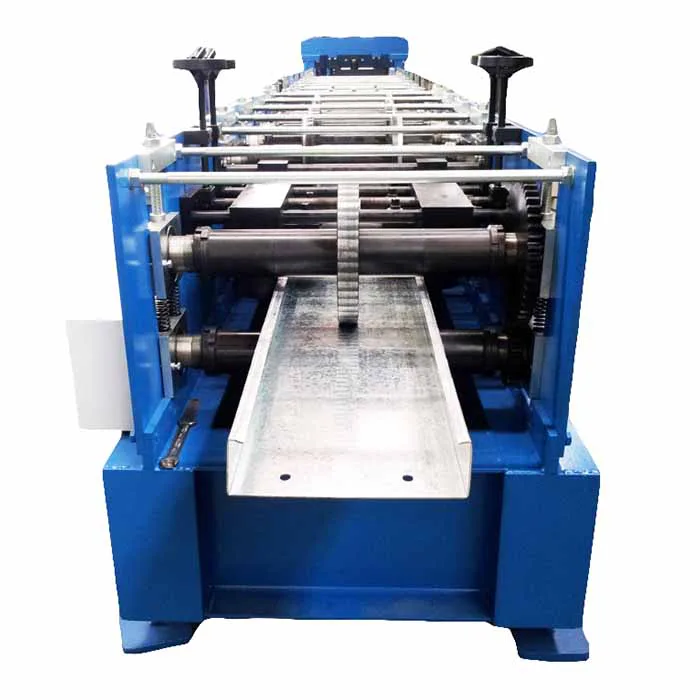
From Flat to Formed- How Bending Brakes Transform Sheet Metal
- By:Metmac
- 2024-04-29
- 184
In the realm of metalworking, bending brakes hold a paramount position in transforming flat sheets of metal into intricate and versatile forms. This article delves into the extraordinary process of bending brakes, exploring how they shape sheet metal with precision and efficiency.
The Art of Bending
Bending brakes are specialized machines designed to introduce controlled bends into sheet metal. They employ a punch and die system, where the punch presses the metal against the die, applying a force that causes it to fold. The exact angle of the bend is determined by the shape of the die, allowing for a wide range of angles and profiles to be created.
Choosing the Right Brake
Selecting the appropriate bending brake is crucial for achieving optimal results. Factors to consider include the thickness and type of sheet metal, the desired bend angle, and the required productivity. Manual bending brakes offer greater flexibility and customization, while hydraulic or pneumatic brakes provide higher precision and automation.
Sheet Metal Preparation
Prior to bending, sheet metal must be properly prepared to ensure a successful outcome. This involves cleaning the surface to remove any dirt or oils, and ensuring that the material is free of blemishes or imperfections. Proper lubrication can also enhance the bending process by reducing friction and wear on the machine.
Bending Techniques
Bending brakes utilize various techniques to achieve specific results. Bottom bending creates bends with the metal folded upwards, while air bending uses a punch and die that exert a force on the opposite side of the material. Rotary bending utilizes a rotating tool to form the bend, producing a more precise and consistent finish.
Safety Considerations
As with any metalworking operation, safety is paramount when working with bending brakes. Proper training and adherence to safety protocols are essential. Operators should wear appropriate personal protective equipment, such as gloves and safety glasses, and maintain a safe working environment.
Applications of Bending Brakes
The versatility of bending brakes makes them indispensable in a multitude of industries. From automotive and aerospace to construction and medical equipment, bent sheet metal components play a pivotal role in countless applications. Common examples include chassis frames, aircraft panels, roofing materials, and medical devices.
Conclusion
From Flat to Formed: How Bending Brakes Transform Sheet Metal unveils the intricate process of bending brakes, highlighting their significance in shaping metal into functional and aesthetically pleasing forms. Whether for intricate prototypes or large-scale production, bending brakes empower engineers and fabricators with the ability to harness the transformative power of metalworking, opening up endless possibilities for innovation and design.
-
Metal Sheet Forming Machine: The Engine of Modern Fabrication and the METMAC Standard
2025/12/30 -
Laser Cutting Machine for Steel Plate: Precision Redefined for Modern Fabrication
2025/12/30 -
Metal Curving Machine: Shaping Strength with Precision and the Art of METMAC Engineering
2025/12/30 -
Shear Metal Cutting Machine: Precision, Power, and the METMAC Standard
2025/12/30
-
Advanced Sheet Metal Rolling, Laser Cutting, and Folding Machines for Precision Fabrication
2025/10/31 -
High-Performance Sheet Metal Bending and Cutting Machines for Modern Fabrication
2025/10/31 -
High-Quality Sheet Metal Equipment for Sale: Efficient Solutions for Modern Manufacturing
2025/10/31 -
High-Performance Sheet Metal Equipment for Sale: Forming and Shearing Solutions for Modern Fabrication
2025/10/22
-
A Guide to the Latest Innovations in Sheet Metal Folding Machines
2024/11/29 -
Key Features to Consider When Investing in a Sheet Metal Folding Machine
2024/11/28 -
Enhancing Precision with Advanced Sheet Metal Folding Machines
2024/11/27 -
How to Choose the Right Sheet Metal Folding Machine for Your Workshop
2024/11/26







